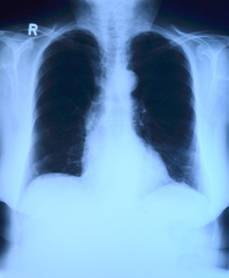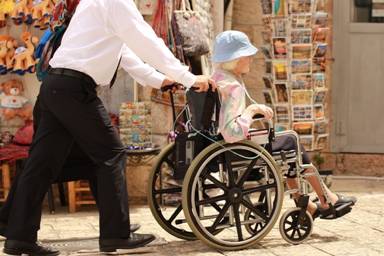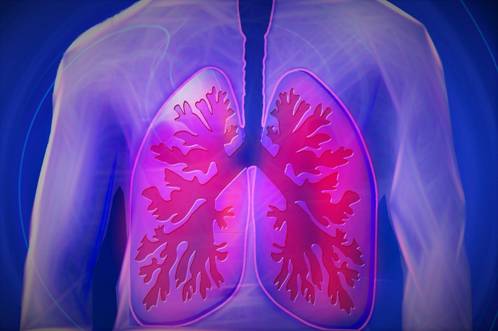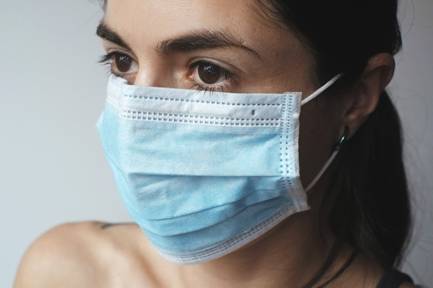Archives
What’s Driving the Pulmonary Rehab Shortage?
 For those suffering from chronic obstructive pulmonary disease (COPD), pulmonary rehabilitation can be extremely helpful, especially after a hospital stay. It teaches patients how to exercise, eat right and take medications properly to regain their strength while also providing socialization to people who may be feeling isolated and scared.
For those suffering from chronic obstructive pulmonary disease (COPD), pulmonary rehabilitation can be extremely helpful, especially after a hospital stay. It teaches patients how to exercise, eat right and take medications properly to regain their strength while also providing socialization to people who may be feeling isolated and scared.
Yet few are provided with access to its life-sustaining benefits.
In fact, a University of Massachusetts study of data from almost 200,000 Medicare patients hospitalized for COPD, published in the May 12, 2020 issue of the Journal of the American Medical Association, found that just 1.5% of patients began pulmonary rehab within 90 days of discharge. The researchers also looked at the number of patients in that group who died within one year of discharge to determine what, if any, impact early rehab may have had. The findings were striking. Of the 38,300 patients who died within a year of discharge, nearly 20% did not undergo early rehab compared to just 7.3% who did.
“If this were a medication, it would be a blockbuster,” saidDavid Mannino, director of the Pulmonary Epidemiology Research Laboratory at the University of Kentucky in Lexington. “The tragedy is that it's only available to such a small percentage.”
Why?
Dr. Carolyn Rochester, a pulmonologist at Yale School of Medicine in New Haven, Conn., in an editorial that accompanied the study’s findings in the Journal of the American Medical Association, wrote that doctors aren’t given enough of an incentive to discuss or refer patients to rehab. And when they do make a referral, they rarely follow up because they are unaware of the benefits of pulmonary rehabilitation or they lack access to it. She also noted that many programs are severely underfunded.
Consequently, Rochester believes access and funding is crucial toward pulmonary rehabilitation aiding more COPD sufferers. Because the average age of the patients in the UMass study was 76.9 years, Rochester recommended a randomized clinical trial that included younger patients and those who had lengthy stats in acute hospitals or nursing facilities.
Read the full story here.
Women and COPD
 Women’s lungs are smaller men’s, making them more vulnerable to pollutants, damage and illnesses such as chronic obstructive pulmonary disease (COPD). However, cases of COPD in women are typically overlooked or misdiagnosed.
Women’s lungs are smaller men’s, making them more vulnerable to pollutants, damage and illnesses such as chronic obstructive pulmonary disease (COPD). However, cases of COPD in women are typically overlooked or misdiagnosed.
Why?
“There is some concern that since COPD is considered ‘an old man’s disease’ that women are not getting diagnosed properly,” said MeiLan Han, MD, MS, a professor of pulmonary medicine at the University of Michigan and a spokesperson for the American Lung Association.
COPD is also frequently misdiagnosed as asthma in women. Dawn DeMeo, MD, MPH, an assistant professor at Harvard Medical School in Boston, suggests that clinicians take a more liberal approach to testing how well their patients’ lungs are working spirometry, a diagnostic tool that “in general tends to be underutilized,” said DeMeo.
Despite the lateness of a diagnosis, women still outpace men when it comes to COPD. One possible reason is the uptick of smoking by women in the 1960s and 70s.
“For every cigarette smoked, women seem to be more susceptible to the lung-related damage that leads to COPD. And we don’t fully understand the mechanism of that susceptibility. It is an area of active research,” DeMeo said. “We know that starting from the time of lung development that estrogens and testosterones have different impacts on lung growth and development, so even from the earliest times of lung development we know that the lung is very susceptible to sex hormones. More research needs to be done to really understand the full impact of hormone biology and COPD.”
Until then, it is important that women—and all COPD sufferers—learn as much as they can about their condition and how it can be treated.
The complete story can be found here.
The COPD-Anxiety Link
 The COVID-19 pandemic has made for stressful times worldwide. This is especially true for sufferers of chronic obstructive pulmonary disease (COPD), who face a greater risk of becoming severely ill if they get infected with the virus. Studies have also suggested a link between COPD and anxiety.
The COVID-19 pandemic has made for stressful times worldwide. This is especially true for sufferers of chronic obstructive pulmonary disease (COPD), who face a greater risk of becoming severely ill if they get infected with the virus. Studies have also suggested a link between COPD and anxiety.
While it’s unknown exactly how it happens, it could be that symptoms like cough, shortness of breath and chest tightness can kickstart a cycle of anxiety. Or people with COPD my feel anxious as symptoms begin to arise, speeding their heart rate.
Whatever the reason, there are seven things you can do to help manage your anxiety if you are a COPD sufferer:
- Know your triggers. For example, if shortness of breath from a COPD flare-up makes you feel anxious, you can identify that as a trigger and take care of it before an anxiety attack occurs.
- Plan accordingly. Staying active is important for COPD sufferers, but it is equally important that you’re as prepared as possible when doing so. Always have enough oxygen present. If you’re walking, make sure there are places where you can sit and take a break if necessary.
- Interpret your symptoms. What you tell yourself about your COPD symptoms is very important. If you’re feeling short of breath, avoid telling yourself it’s a worst-case scenario like you really cannot breathe. Doing so makes your anxiety and breathing worse. Instead, stay positive by reminding yourself that you just need some rest after getting some exercise, and you’ll be okay shortly.
- Used pursed lip breathing. While there are many effective breathing techniques, pursed lip breathing—slowly in through your nose and out through your mouth—helps COPD patients slow breathing and prevent hyperventilating. Once you rest and use pursed lip breathing, the best thing to do is focus on anything but your breathing.
- Distract yourself. Play a game on your phone, watch TV, count to 100, visualize yourself someplace peaceful—do anything to try and take the focus off your nervousness and allow your breathing to calm down.
- Be mindful. Mindfulness means being aware of your thoughts, emotions and surroundings. Being mindful allows you to reset your thoughts and take the focus off your stress. Next time you start to experience worrisome thoughts, focus on a simple task such like planning meals for the week or creating a shopping list. Doing so may help you relax and get your breathing under control.
- Attend a virtual support group. The COVID-19 pandemic has put a temporary end to large gatherings, but you can still find online support groups to help cope with COPD. Talking with someone who understands what you are going through can help you get a better handle on your anxiety.
The full story can be found here.
Easing Summertime Exacerbations of COPD
 Living with chronic obstructive pulmonary disease (COPD) is never easy—especially during the summer when the increased heat, humidity and pollen can make breathing almost unbearable and possibly lead to flare-ups or other symptoms. Fortunately, there are ways COPD sufferers can participate in summertime fun while remaining comfortable and, most importantly, safe.
Living with chronic obstructive pulmonary disease (COPD) is never easy—especially during the summer when the increased heat, humidity and pollen can make breathing almost unbearable and possibly lead to flare-ups or other symptoms. Fortunately, there are ways COPD sufferers can participate in summertime fun while remaining comfortable and, most importantly, safe.
The first thing is to stay in the shade as much as possible. Extreme summer temperatures can make breathing difficult even for people with healthy lungs—so you can imagine what they can do to someone with COPD. If you are participating in an outdoor activity, make sure there is a shady or cool spot nearby where you can take a break. An air-conditioned building is ideal, though sometimes just the shade of a tree is enough to regulate body temperature and help you catch your breath.
When making plans, always keep your eye on the clock. Try to avoid the hottest time of day, typically between 11 a.m. and 4 p.m., by organizing something in the morning or at sunset to help keep your body cool.
On days when it is really hot, staying indoors may be the safest thing. Walking the mall or going to a movie are great ways for COPD patients to keep cool. Another option is having friends over to your house or going to theirs—as long as it is air-conditioned, of course.
Staying hydrated is always important, especially during the summer when maintaining a safe body temperature can reduce the risk of a COPD flare-up. Keeping water handy is important. For example, keep a cooler stocked with bottled water in your car. And make sure you are drinking a bottle of water every two hours. If you are sweating heavily, drink one an hour.
For more on keeping COPD in check during the summer, check out the complete story.
Why COPD Can Happen to Non-Smokers
 Regardless of their smoking habits, people with small airways relative to their lung volume – a condition known as dysanapsis – are more likely to be diagnosed with chronic obstructive pulmonary disorder (COPD). That is according to a study of the CT scans of more than 6,500 adults published online in the Journal of the American Medical Association.
Regardless of their smoking habits, people with small airways relative to their lung volume – a condition known as dysanapsis – are more likely to be diagnosed with chronic obstructive pulmonary disorder (COPD). That is according to a study of the CT scans of more than 6,500 adults published online in the Journal of the American Medical Association.
“Our study shows that having an undersized airway tree compromises breathing and leaves you vulnerable to COPD later in life,” said lead author Benjamin M. Smith, MD, assistant professor of medicine at Columbia University Vagelos College of Physicians and Surgeons. “Our findings suggest that dysanapsis is a major COPD risk factor – on par with cigarette smoking.”
Dr. Smith had his colleagues found that individuals who had dysanapsis had the poorest lung function and were eight times more likely to develop COPD. This supports a 2015 study that determined there are two major paths to people developing COPD later in life – those with normal lung function whose exposure to irritants such as cigarettes lead to a rapid decline and those who had poor lung function from an early age.
“This low starting point increases the risk for COPD in later years, even in the absence of rapid lung function decline,” Smith said. “Based on our data, dysanapsis may account for a large percentage of these cases.”
Smith’s study may also explain why COPD is rare among heavy smokers. Unlike those with dysanapsis, these people have larger airways compared to the size of their lungs, which allows them to do considerable damage by smoking while still leaving enough in reserve to ward off COPD.
“Of course, the harmful effects of smoking are legion, including lung cancer, heart disease and stroke,” Smith said. “So anyone who smokes should do their best to quit."
Click here for more on this story.
COPD and Living Comfortably with a Mask
 If you do not feel comfortable wearing a mask, practice the same safety measures that have been in place since the pandemic began: stay home and contacting your physician if you begin experiencing symptoms such as a fever or a consistent cough.
If you do not feel comfortable wearing a mask, practice the same safety measures that have been in place since the pandemic began: stay home and contacting your physician if you begin experiencing symptoms such as a fever or a consistent cough.
As the number of coronavirus cases continues to spike across the country, health experts are imploring people to wear masks in public, especially indoors and other places where social distancing is impossible. While this practice has proven effective in combatting COVID-19, wearing a mask may be challenging for those living with lung conditions such as COPD and asthma.
Rather than simply not wearing a mask when going out in public – a huge risk for anyone, especially those with underlying conditions – there are some things people who are concerned can do. For starters, try wearing a mask around the house to get accustomed to with how it feels. Do not use n95 masks, which should be used solely for healthcare providers and can also be difficult to breathe through. And, whatever covering you choose, make sure it covers your nose and mouth.
Dr. Tania Elliott, an allergist and immunologist as well as the spokesperson for the American College of Allergy, Asthma and Immunology, suggests wearing masks that are moisture-wicking and made of breathable fabric. Bandanas and neck gaiters are good options as well because they are effective barriers but offer more breathability as they are open on the bottom, Dr. Elliott said.
If you decide to run an errand while wearing a mask, do what you need to do and head back home. This is the worst possible time to stroll around a store and browse. Also, clean your mask after each use.
“Wearing cloth masks can lead to a buildup of sweat, mucous and secretions if worn for a prolonged period of time,” said Dr. Elliott. “It’s very important to wash and dry masks on the highest heat setting after each usage so it doesn’t become a source of infection, especially for asthma or COPD patients.”
Check the weather too. Most people have a hard time breathing on hot and humid days, so try and pick a day with cooler temperatures in the forecast. And because air pollution can also make breathing difficult, log on to airnow.gov, enter your zip code and check the conditions before heading out.
For more information, read the story.
COPD Linked to Lung Cancer in Non-Smokers
According to a recent study, chronic obstructive pulmonary disease (COPD) can lead to a heightened risk of lung cancer even in people who have never smoked.
Respiratory conditions that constrict airways, such as bronchitis and emphysema, fall under the category of COPD, of which smoking is a main risk factor. But according to a study in the journal Thorax, nearly 40% of people who develop COPD have never smoked. To delve further into this matter, researchers looked at data from the National Sample Cohort study performed by the National Health Insurance Service of nearly 340,000 men and women in Korea with no history of lung cancer.
The subjects were monitored for seven years, during which 1,834 participants developed lung cancer – including 1,544 who did not have COPD. Among those who smoked, those without COPD were twice as likely to develop cancer. Those with COPD were six times as like to do so.
In summation, the study found that COPD on its own is a risk factor in developing lung cancer – with or without cigarettes.
"Given that poor lung function in COPD is often a barrier to optimal lung cancer treatment due to increased risk of treatment related morbidities,” the researchers wrote, “our study suggests that early detection of lung cancer in COPD patients may reduce the risk of treatment complications.
"Future studies should evaluate whether COPD patients are candidates for lung cancer screening, irrespective of smoking status.”
Protecting COPD sufferers during COVID-19 Pandemic
People with underlying conditions such as chronic obstructive pulmonary disease (COPD) are at a higher risk during the COVID-19 crisis. But social distancing and handwashing are just some of the measures people with COPD need to take to stay safe, according to an article on Nursing Standard.
A key factor in self-management of COPD during the pandemic is to stop smoking, as smokers are more vulnerable to the virus. Ensuring patients have enough of their medication and are taking it correctly is also essential.
Because there are many similarities between the symptoms of COPD and COVID-19, it is integral to know the difference between the two: people with COPD often have shortness of breath and a cough, with or without sputum, while those suffering from COVID-19 also tend to have fatigue and a fever.
To maintain proper social distancing, many people have been using telehealth to communicate with their physician instead of going into the office. When patients with COPD are speaking with a nurse or doctor about their fears that they may have contracted coronavirus, it is important that they be able to answer questions about the nature of their cough and if it has changed in any way, as well as any fever they may have experienced.
Of course, the best way for those with COPD to guard against a COVID-19 infection is to practice the same guidelines that have been in place since the pandemic started – repeated handwashing for at least 20 seconds; avoid touching the eyes, nose and mouth; disinfecting surfaces; and self-isolating. It is also highly recommended that people with COPD wear a mask if they must be out in public.
Follow the link for more on this story.
Living with Chronic Conditions Increases Risk of COVID-19
Those suffering from chronic conditions such as chronic obstructive pulmonary disease (COPD), diabetes, lung disease and heart disease may be at a higher risk of contracting a severe illness from COVID-19, according to a new study from the Centers for Disease Control and Prevention (CDC).
Based on data from about 7,000 cases, the study found that 78% of COVID-19 patients in the United States who required admission into an intensive care unit had at least one underlying condition, as did 94% of hospitalized patients who died from COVID-19. Diabetes (32%) was the most prevalent, followed by heart disease (29%). Chronic lung disease, which includes COPD, asthma and emphysema, was found in 21%.
“These preliminary findings suggest that in the United States persons with underlying health conditions or other recognized risk factors for severe outcomes from respiratory infections appear to be at a higher risk for severe disease from COVID-19 than are persons without these conditions,” wrote the CDC researchers. “Community mitigation strategies, which aim to slow the spread of COVID-19, are important to protect all persons from COVID-19, especially persons with underlying health conditions.”
The study also showed that while COVID-19 poses a great risk to the country’s elderly population, people of all ages are susceptible to infection – 23% of the COVID-19 cases were found in children and teenagers age 19 or younger. Only a small number from this group – 48 – were admitted to a hospital, however, and just eight were admitted to an ICU, the report found.
The researchers acknowledged the results of the study were preliminary, noting that “the analysis was limited by missing data related to the health department reporting burden associated with rapidly rising case counts and delays in completion of information requiring medical chart review. These findings might change as additional data become available.”
For more information, read the full study or article.
Tips for Getting Through the COVID-19 Pandemic for COPD
Refill your medication, contact your oxygen supplier and read the Disaster Preparedness Plan Booklet. These are among the recommendations offered by the COPD Foundation to those with chronic obstructive pulmonary disorder (COPD) who may have concerns during the COVID-19 pandemic. No one is immune to the virus but, like seasonal influenza and pneumonia, COVID-19 poses a greater risk to people with underlying conditions such as COPD.
The foundation also recommended refilling medications as soon as possible and keeping at least a 30-day supply available. If a pharmacy runs out of a medicine, patients should check with their healthcare provider for alternatives. The foundation also recommended that patients contact their oxygen supplier about how they are preparing for a possible COVID-19 outbreak in their area.
Some patients living with COPD may rely on caretakers such as visiting nurses or aides. In those cases, they should ask what precautions are being taken to prevent a potential spread of the COVID-19 to make sure they don’t bring any semblance of infection into a patient’s home. Most importantly, the foundation stressed that patients with COPD who begin experiencing symptoms of a possible COVID-19 infection should seek medical attention out immediately.
Read the full article here.







